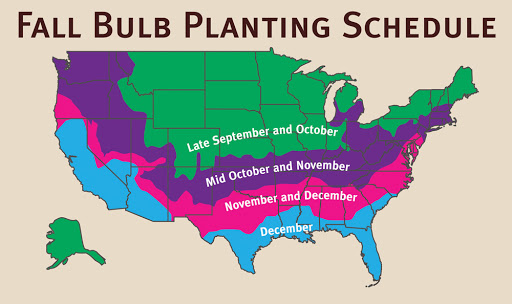I’ve been purchasing bulbs from A.D.R. for many years. The quality is superior and the service fantastic. Chris and his family have always been prompt and accommodating. If you need it, Chris can find it! I wouldn’t shop anywhere else!
Anna Myatt
, Myatt Landscaping
« Previous Plant | Next Plant »
Tulipa Double Early 'Columbus'
Tulip
Columbus is a Double Early Tulip with large, peony-shaped blooms in raspberry pink, edged with creamy white for a striking contrast. Its sturdy stems reach 16 to 20 inches, supporting lush, layered petals that create a full, rounded appearance. The flowers can grow up to 5 inches across, opening wide in sunlight. Blooming in early to mid-spring, it thrives in full sun and well-drained soil, making it ideal for borders, containers, and cut arrangements.
Recommended Substitutes for Tulipa Double Early 'Columbus'
Tulipa Calculator
When should I plant Tulipa Double Early 'Columbus'?

Growing and Maintenance Tips for Tulipa Double Early 'Columbus'
Planting: Plant in fall once soil temperatures dip below 55°F. Set bulbs 6–8 inches deep, pointed end up. Double early tulips appreciate a sheltered site to protect their full blooms from spring winds and rain.
Spacing: Space bulbs 4–6 inches apart. For a lush display, plant in dense clusters of 10 or more—this enhances the layered effect of their peony-like flowers.
Light: Full sun is best. They will tolerate light shade but flower most abundantly with 6+ hours of direct sunlight daily.
Soil: Choose a well-drained, neutral to slightly acidic soil (pH 6–7). Avoid heavy or soggy conditions that may lead to rot—especially important for these densely petaled varieties.
Watering: Water after planting to settle the soil. In spring, water during dry periods, but ensure soil drains freely—excess moisture can damage flower heads.
Temperature & Dormancy: Requires 12–16 weeks of cold (below 50°F) for proper rooting and bud formation.
Fertilization: Apply a balanced bulb fertilizer at planting time and again as foliage emerges in early spring to support strong stems and full blooms.
Pests: Generally trouble-free. Use mulch or mesh to discourage squirrels. Ensure good drainage to avoid bulb rot. Deer will eat the flower buds or emerging foliage, especially in early spring. Protect with fencing or repellents in high-pressure areas.
Disease: To prevent Botrytis (Tulip Fire), plant only firm, healthy bulbs in sunny, airy sites. Avoid overhead watering, and remove any affected foliage promptly—do not compost. Rotate plantings annually, and if Botrytis has appeared, avoid that site for at least three years.





Check back soon for additional details.